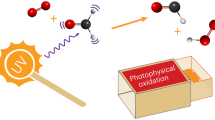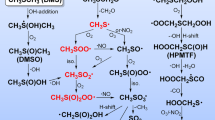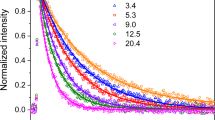Abstract
WHEN 1,3-dichlorotetranuoro acetone is photolysed, two CF2Cl radicals and a molecule of carbon monoxide are formed. The CF2Cl radicals combine to form 1,2-di-chlorotetrafluoro ethane, and abstract chlorine atoms from the parent ketone to form dichlorodifluoro methane1; but, in addition to these products, a significant amount of 1,3-dichlorohexafluoro propane is found in the photolysis mixture. At first it was considered that this arose from a secondary photolysis of 1,4-dichlorohexafluoro acetone formed as a result of the chlorine abstraction reaction, but quantitative investigations2 showed that it could not originate in this way.
This is a preview of subscription content, access via your institution
Access options
Subscribe to this journal
Receive 51 print issues and online access
$199.00 per year
only $3.90 per issue
Buy this article
- Purchase on Springer Link
- Instant access to full article PDF
Prices may be subject to local taxes which are calculated during checkout
Similar content being viewed by others
References
Bowles, R., Derbyshire, H., Majer, J. R., and Robb, J. C., Nature, 185, 683 (1960).
Bowles, R., Majer, J. R., and Robb, J. C., Trans. Faraday Soc., 58, 1541 (1962).
Gunning, H. E. (private communication).
Mastrangelo, S. V. R., J. Amer. Chem. Soc., 84, 1122 (1962).
Author information
Authors and Affiliations
Rights and permissions
About this article
Cite this article
MAJER, J., PHILLIPS, D. Disproportionation of Halogenated Alkyl Radicals. Nature 203, 1165–1167 (1964). https://doi.org/10.1038/2031165b0
Issue Date:
DOI: https://doi.org/10.1038/2031165b0
This article is cited by
-
Ultraviolet absorption cross-sections of chloro and chlorofluoro-methanes at stratospheric temperatures
Journal of Atmospheric Chemistry (1988)
Comments
By submitting a comment you agree to abide by our Terms and Community Guidelines. If you find something abusive or that does not comply with our terms or guidelines please flag it as inappropriate.



